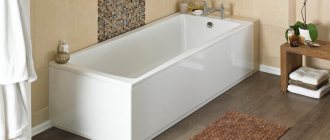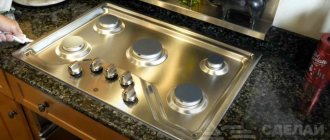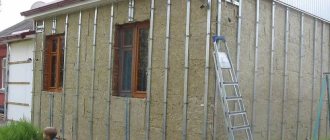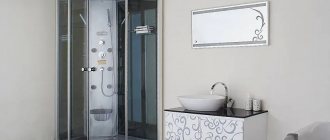Structurally, the tank is a chamber equipped with a siphon partition, a removable basket and an upper protective grille. Some tank models provide additional elements in the form of a reinforcing edging, seals, a lid and an extension to the storm drain element. In addition, the storm water inlet design provides two options for water drainage:
- Removing liquid downwards. Such storm drain elements direct water into the ground, directly into the drainage well.
- Removing drains to the side. Such a tank is connected to pipes into a single structure.
All rainwater inlets differ in size, permissible loads, type of material and shape. Stormwater tanks are marked depending on their purpose:
- D. The marking means “rain inlet”. The element is used in private areas and in pedestrian areas.
- DB1 and DB2. Interpreted as “large rainwater inlet”. Installed in parking lots and along city roadways.
- DM1 and DM2. Main storm water inlet.
- DS1 and DS2. Extra-heavy rainwater inlet. Designed for installation in areas with maximum load.
- DK. The rainwater inlet is round.
Material for manufacturing the element for point collection of rainwater: cast iron, plastic and concrete.
Cast iron storm water inlets
Storm drain elements made of cast iron are the most durable and at the same time the heaviest. SCh20 grade metal can withstand loads of 15 to 25 tons (depending on the dimensions of the tank), is inert to aggressive environments, durable and corrosion-resistant. More often, cast iron storm water inlets are used in the construction of urban sewer lines. The tanks have high throughput and at the same time good environmental friendliness. The metal does not pose a threat to the environment.
Installation of a rainwater inlet in the blind area of a house, provided it has a cast iron structure, must be accompanied by the installation of a special concrete base. Otherwise, the metal will begin to rust. In addition, working with cast iron elements is difficult due to their heavy weight.
Plastic
Polymer tanks are widely used in private and municipal construction. Plastic has the following advantages:
- light weight;
- high resistance to temperature changes;
- inertness to chemical/aggressive environments;
- ease of installation and maintenance;
- wide selection of models in size and shape;
- favorable cost of products.
Caring for polymer rainwater tanks is easy: dirt, silt, and sand can be easily washed off with a stream of water.
All plastic models are marked depending on their rated load:
- A. The load is up to 1,500 kg. This option is good for private construction.
- B. The storm water inlet can handle a load of up to 12.5 tons.
- C. Maximum withstands loads of up to 25 tons.
- D. Load up to 40 t.
- E. Nominally withstands up to 60 tons.
- F. Capable of supporting loads up to 90 tons.
It is better to buy a rain inlet that can withstand a slightly greater load than was obtained in the calculations.
Concrete
This type of rainwater inlet weighs slightly less than a cast iron one. The material is resistant to aggressive drains, durable and has good throughput. But the inner surface of concrete tanks is slightly rough, which causes silt to build up on its walls over time. The accumulated sludge will give off an unpleasant odor as moisture evaporates from the tank. In addition, concrete is a massive material that requires the use of special equipment when laying.
Massive rough concrete can be replaced with lighter and smoother polymer concrete. Polymers added as reinforcing fibers make the final product light, durable, and prone to undergoing high loads.
What are rainwater inlets for storm drainage?
A storm water inlet is a special container that is installed in places with the highest concentration of precipitation - rain, snow. The systems are installed above water pipes or in low areas of the site.
Storm drainage consists of several elements, the main one of which is a rainwater inlet. The devices have different designs. They are distinguished by the material they are made of.
An equally important criterion when choosing a specific model is the ability to withstand weight loads.
The device consists of a lattice frame, which is fixed on the surface of the water intake well.
Purpose
A drainage structure—a rain inlet—removes excess liquid, protects the foundation of a residential building from flooding with sewage, and protects asphalt and tiles from premature destruction due to the negative effects of moisture.
The condition of the building and the garden plot depends on how correctly the structure is selected and installed.
The storm water inlet is the main part of the drainage system. It is this that bears the main function of the storm drain - to accept all types of runoff - rain, melt water, the remains of human activity.
Design and operating principle
Almost all devices have the same design. Their difference is only in depth and mass. The depth of the standard system is 40-45 cm, weight - depending on the material of manufacture.
The retail chain sells both stationary rainwater inlets and those complete with additional elements.
- the outer part is a lattice;
- siphon - serves as a partition;
- container for receiving water - has a different volume, which affects the throughput system of the structure;
- direct device.
The purpose of a rainwater inlet is to collect water and filter it from debris. How it's done?
Water enters the device. Until this moment, it is pre-cleaned in a basket - this is primary filtration. Here the liquid settles, impurities, sand, dirt and debris settle down. Then the water flows through drainage channels into pipes and storm gutters. Reaches an external collector or stationary storage system, which is located within the site.
Which is better - water trays or rainwater inlets?
If you simply install drainage trays by placing them on the ground, you will not be able to completely solve the problem of moisture removal from the site. This idea can be seen as a temporary measure. After all, after 4-5 months the containers will move apart and all the water will end up on your site. In addition, along with the water, the trays will contain dirt particles, pieces of debris, sand and gravel.
Capacity of storm water inlets: formula for calculating the volume of storm drains
In order for the rainwater inlet device for storm drainage to work functionally, you need to choose the right model. To do this, determine the throughput of the product. How to do it?
Use the online calculation program. Dozens of such calculators are available online.
The principle of using the program is simple. In the table offered by the resource, enter the information that the program requests:
- the level of precipitation that is typical for your area;
- plot size;
- roof surface area;
- level of moisture absorption - takes into account the different types of surfaces available on your territory.
The calculator will perform the calculations and display the result. The indicator is measured in liters for a certain period of time - second, minute, hour.
Important! Choose a model whose characteristics are greater than the threshold of passing water that you received.
Types of storm water inlets
There are several types of structures. All models are classified according to the following criteria:
- size;
- form;
- ability to withstand mechanical loads;
- manufacturing material.
When choosing a specific version of a rainwater inlet, attention is most often paid to the last indicator. What devices are made of and how the manufacturing material affects the technical characteristics of the design - let’s look at it in more detail.
Made of cast iron
Installing a storm water inlet made of cast iron guarantees the reliability and quality of the wastewater disposal system. Design specifics:
- thanks to the presence of wide grooves, it allows you to drain a large amount of water in a short time;
- the system operates smoothly without additional maintenance;
- cast iron is resistant to corrosion;
- the metal does not contain harmful compounds and is safe for humans.
If you decide to install a storm drain made of cast iron, be prepared for the following:
- the design will cost slightly more than analog devices made from other materials;
- the heavy weight of the metal makes its installation difficult;
- if the surface of the material is not treated, rust will appear over time;
- ferrous metal is a source of profit; cast iron products are often stolen and handed over to scrap metal collection points. To protect the system, install a latch that locks the grille.
The average price of a product is 2,000 rubles per unit.
Made of plastic
Do-it-yourself installation of a rain inlet made of plastic is an ideal design for a private home. Despite its fragility, the material can withstand high loads. The device locks tightly into place. There are no fasteners in the device; adhesion is achieved by tightly fitting the joints. Follow this assembly principle, and the system will last for many years.
- have no analogues;
- are cheap;
- easy to install;
- resistant to temperature fluctuations;
- the system is easily connected to the pipeline;
- rainwater inlets made of plastic have several modifications;
- the design is easy to maintain;
- The device is characterized by low absorbency and has a low hydraulic resistance.
Types of devices
Drainage systems are distinguished by the materials from which they are made. Ease of installation, durability and ease of operation depend on the strength of the raw materials of the housing and grille. There are 4 types of devices.
Made from concrete
The structures are made of reinforced concrete or composite material. Varieties are divided into 3 groups:
- Lungs. They are produced in the shape of a cube, measuring 40x40 cm. They are placed in a pyramid inside the outlet pipeline. Resistant to temperature fluctuations.
- Heavy. The body is made of strong fiber-reinforced concrete, the gratings are made of cast iron. Withstands weight up to 3 tons. Suitable for sidewalks, exiting buildings and pedestrian crossings.
- Trunk. Assembled from ready-made cement blocks. Installed along the roadway. Withstands weight up to 90 tons.
Concrete structures are very heavy. When laying a pipeline, you need special equipment, which is not always convenient in a country house. Due to their strength and resistance to high loads, the models are relevant as a water intake in road construction.
Strong storm drain in the ground Source twitter.com
Made of cast iron
Iron-carbon alloy is a heavy material that is highly durable. Storm water inlets made of cast iron can withstand weights of up to 90 tons and cope with sudden temperature changes. Metal has a high throughput capacity, so water will not accumulate in the storm drain. Models are classified by type:
- D. Compact products weighing up to 29 kg. Can handle loads up to 1.5 tons.
- DB. The weight of large raincoats is from 50 to 80 kg. Used in road surfaces and parking lots. Supports weight 12.5 tons.
- DM. The devices are suitable for highways with heavy traffic.
- DS. Super-heavy structures are used in areas with increased loads (airfields, docks).
How to lay a storm drain with your own hands
The systems are placed in accessible places:
- near a residential premises;
- along the road;
- next to the front door;
- below water pipes;
- in areas where slopes converge - if the terrain is uneven or there are paths on a hill.
If you are lucky and precipitation is a rare occurrence for your climate, the site is not threatened by meltwater flows. In such a situation, the best place for a storm drain is near the house. Lay the rainwater inlet under the water supply.
To lay a storm drain with your own hands, follow the diagram:
- buy materials;
- prepare tools for work;
- select a location;
- cut a hole in the device;
- install a rainwater inlet in the blind area;
- connect the device and the drainage tray.
What materials and tools will be needed for installation?
During the installation process, you will have to work with hard materials - gravel, crushed stone, concrete. The volume of consumables determines the scale of the project:
- sewer size;
- storm drain capacity.
Using a plastic structure as an example, let’s look at the standard list of materials and tools:
- ready-made storm water inlet - buy it at any construction hypermarket;
- PVC pipe - for connecting to the sewer;
- connecting corners;
- set of seal couplings;
- tee.
- Bulgarian;
- level;
- shovel;
- hammer;
- putty knife;
- drill or hammer drill.
How to cut a hole in a storm drain
Most ready-made storm drain models already have holes for connecting to the sewer pipe. But some designs do not have such holes. Make them yourself.
A hole of the required size is made according to preliminary markings - markings are applied to all walls of the well. The joint is drilled out with a metal drill. Diameter - 0.8 cm.
The next step is to take a hammer and tap it on the inside of the well wall. To knock out the plug and not damage the surface, work lightly and without force.
Treat the seam between the pipe and the storm drain with sealant.
How to choose the best place to install a storm drain
Where you place the system depends on the location of the drain. The shorter the distance, the better the water will get to its center.
Take into account the different levels of wastewater pressure - the water pressure during heavy rain and light rain will be different. The more correctly you carry out all the measurements and calculations, the more efficiently the device will work.
Features of installing a rainwater inlet in a blind area
- The functional purpose of the blind area is to protect the foundation of the building from flooding. Installation algorithm:
- dig a trench;
- place trays;
- install storm water inlets;
- lay the covering in the blind areas. Compact the bottom of the drain well. Make an incline. Determine the depth based on the size of the trays. Position it so that the top is visible on the surface, but does not extend beyond the edges of the trench;
- Place a concrete layer cushion on the bottom. Height - 8-10 cm. While the mixture has not hardened, install the trays;
- Determine how evenly they are installed using a thread. Grates will be attached to the top;
- Storm drains are installed in areas under the drain and connected to pipes. Sand retainers are mounted on top;
- formwork is made on the sides of the trench. Lay concrete between it and the tray;
- waiting for the concrete to set;
- remove the formwork;
- lay a blind area.
How to connect a rainwater inlet to a drainage tray or drainage pipe
Connection of tray and storm water inlet:
- make vertical cuts on the walls of the structure;
- cut through the plug - we discussed how to do this above;
- use the connecting corner;
- treat sealant joints.
Required materials and tools
When installing storm drains, the following materials are used:
- point storm water inlets, pipes, drainage trays, roof gutters, gratings and sand traps;
- sand and crushed stone;
- concrete or plastic rings for the manhole;
- sealant;
- brackets;
- cement;
- pipe corner elements.
The main materials for the manufacture of storm drains consist of cast iron, plastic, aluminum, and steel. In addition, you need to prepare the following tools to get started:
- Shovel. Used when digging trenches;
- Hacksaw for metal. Cuts pipes to the required size;
- Wrenches, screwdriver, screwdriver, file, screw cutting boards.
Maintenance, operation and care
So, all the work is done, the system is installed. To prevent the unpleasant smell of sewage from spreading throughout the area, the device must be maintained. Follow these rules:
- Do not allow debris to enter the system through the grille. Otherwise, rotting processes will begin inside the structure;
- If you have a personal water collection well, monitor its filling level. Overwatering will lead to structural failure;
- regularly - at least once a quarter, inspect storm drain filters. Lift the grill and remove the basket. Rinse it well under running water. Remove debris and dirt;
- repeat the manipulation with the siphons.
Advice! If persistent deposits of dirt and a pungent odor appear on the walls of the basket, use a spatula and remove the deposits.
A do-it-yourself rainwater inlet will solve a lot of problems related to water flow. The main thing is to think everything through in advance. Calculate the capacity of the structure, choose the appropriate model. Find the location where you will install the system. Buy materials, prepare tools. Follow the instructions we discussed in this article - and you will succeed.
Source
What it is?
This is a special container into which liquid flows from pipes installed on the facade of the house. This tank must be made of durable material as it faces soil pressure, mechanical loads and water pressure. Storm sewer inlets should not be subject to corrosion.
A rainwater well with a grate can be round, square, oval, or rectangular. This fact does not affect the performance characteristics in any way. The choice of form may be influenced by the design features and style.
What does it consist of?
If you compare storm drains, you will notice that they differ in weight, size and some other features. According to the standard, the depth of the device is 400 mm. As a rule, they are light in weight, except when cast iron is used as the material.
Please note! Reservoirs can be sold as a complete set or individual elements.
- The container itself.
- A basket that is installed inside the water intake.
- Partition or siphon.
- External grille.
In different types, these elements can be made of different materials, which affects the final quality of the product. As for the grille, it is necessary to choose a high-quality and durable one, since it encounters mechanical stress when pedestrians walk and even when hit by a car.
Varieties
Stormwater wells vary in the material used. Devices available for sale include:
To make the right choice about where and which one is best to install, let’s consider their technical characteristics, as well as their pros and cons.
Made of cast iron
An important feature is its heavy weight. At the same time, it is capable of handling loads of up to 90 tons. Thanks to these technical characteristics, cast iron products are used in places where heavy loads are expected:
- Roadway.
- Car gas stations.
- Car parking.
- Highways.
- Pedestrian areas.
They cope well with sudden changes in air temperature and have a large throughput capacity, so there will definitely be no stagnation of water. In their shape, such products are square, round and rectangular. Depending on the shape, the corresponding protective grille is selected.
These designs have been less popular in recent years, as they have been replaced by new technologies that are much easier to install.
Made of plastic
Plastic baskets are the most popular. And this is not strange, because the material is lightweight, which simplifies its transportation, installation and maintenance. Modern modifications make it possible to cope with temperature changes from -40 to +90 degrees Celsius. Mainly used in arranging private houses and cottages. The material is based on polymer concrete, polyethylene and polypropylene.
By standard they have a cubic shape. There are pipes on each side, which allows you to connect several storm sewer pipes at once. The diameter of the pipe can vary from 110 to 200 mm. When choosing them, you may encounter special product markings:
- A – provides a load of 1.5 tons. Area of use: pedestrian paths.
- B – 12.5 t. For garages and parking structures.
- C – up to 25 tons. Used on highways and gas stations.
- D – up to 40 tons. Used in places where freight transport is operated.
- E – up to 60 tons. Truck parking.
- F – up to 90 tons. Used where massive special equipment is moving.
Advice! The choice must be made based on the purpose of use.
Made from polymer concrete
One of the varieties of plastic water intakes is polymer concrete. The product has the positive technical characteristics of plastic and concrete. It is used to organize storm drainage in parks, on pedestrian paths, parking lots, roadways, courtyards, private homes, etc. They are used in organizing linear and point design systems.
Good to know! In addition to all of the above, there is also a reinforced concrete one, which is not difficult to make. To do this, you must have the appropriate form. Although this will take time, it can save your family budget.
Cast iron receivers
Most are installed to remove moisture from roads. Cast iron – SCh20 has a lot of advantages. These include wear resistance, durability, and resistance to reagents. Cast iron products differ in shape, weight, and load they are ready to accept.
- DM - rectangular model. Weight 80kg or more. Withstands 12.5 tons.
- Models DM1 and DM2 are used for yard storm sewers and highways.
- DB is also a rectangular model. Weight 115 kg minimum. Can withstand DB2 25 tons. Fits well on a freeway with active traffic.
- DK is a model in the shape of a sphere. Weight up to 100 kg. The DK rainwater inlet is used as a spare while the main one is under repair.
- Load 15 tons.
Installation of storm water inlets DM, DB and DK requires special equipment.
Advantages of cast iron products
- Ready for large volumes of waste water
- Strength
- Long service life
- Cast iron is an environmentally friendly material
- Does not rust
- Loyal price
Disadvantages of cast iron rainwater inlets
- Heavy weight
- Without special coating, susceptible to corrosion
- Installation requires a security system to prevent theft.
In the private sector, the DB1 model is used - a small receiver with a cast iron grille.
By its design, a rainwater inlet is a special container, the purpose of which is to accumulate water flowing down or coming from underground. An important requirement for this sewerage part is the strength of the structure, which must be sufficient to withstand the load, both from flowing water and soil pressure. Another requirement is resistance to corrosion, since the very purpose of the part requires constant contact with water.
In other words, the storm water inlet serves as a container for collecting water. Its use is required not only to drain the site and fertile soil, but also to create reliable protection for the foundation and walls of the house from flooding during heavy rains.
Also, the design of this part of the storm drain is made in such a way as to protect it from the penetration of various debris, for example, leaves. This helps protect your drain pipes from clogging.
Types of storm water inlets
Modern industry offers several types of rainwater inlets based on the materials used to make them. The most common are:
- cast iron models;
- plastic storm water inlets;
- made of reinforced concrete;
- polymer concrete models.
Each type of material must be used in accordance with the destination and installation of the future storm drain in the general storm sewer system.
Since storm drains are most often used in places of high load (these can be highways, places where people often pass by or there is a large amount of incoming water), the most common version of this part is cast iron.
Cast iron rainwater inlets available on the modern market are available in a variety of configurations and sizes. The size of the stormwater inlet will depend on the amount of water expected to be received. It is very important to choose the correct volume of this part to prevent water from overflowing when accumulating. Cast iron rainwater inlets have increased strength, can withstand weight up to 90 tons, and are also able to withstand the negative effects of many aggressive environmental factors.
The main disadvantage of such models is their high price, which is several times higher than the cost of a similar product made of polymer material. Also, in the wake of the growth of hunters for ferrous metals, when installing rainwater inlets made of cast iron, it is necessary to provide safety measures.
Plastic rainwater inlets are mainly used to perform the function of local water collection. The places where they are installed are garden plots, garages, balconies and drainage systems from the roofs of residential buildings.
Such varieties have their undeniable advantages. First of all, it is ease of installation and lightness of design. It is even possible to install plastic storm water inlets on top of each other to obtain the required container volume. The smooth inner surface also makes the device easy to clean. According to statistics, such models are much less likely to clog.
The size of the part is selected depending on the function performed and the volume of incoming water. With an increased catchment area, the chamber dimensions should be increased. The most convenient option are square models, the side size of which is 300 mm.
Another type of plastic storm water inlets is a plastic drain, which is used when introducing a sewer pipe directly into the water collection area.
Division of rainwater inlets by strength class
Storm water inlets are divided not only according to the type of materials they are made of, but also according to their strength class. Knowledge of this classification will allow you to make the right choice when purchasing a specific model and designing a storm drain.
- A 15. The lowest strength class, which is only 15 kN or 1.5 tons. Typically, such models are installed in public gardens, parks, and sidewalks. In places where the load on the device will be minimal;
- B 125. The second most durable storm water inlets, which can withstand loads of up to 125 kN or 12 tons. They are installed in garages where cars are kept;
- C250. The next strength class, the load value of which is already 25 tons. They can be installed on large highways, places with a large number of passing vehicles, regardless of class (cars or trucks);
- D These models can withstand loads of up to 40 tons and can be used in automotive or industrial plants;
- E600. The next class, which is used mainly at sea berths and warehouses where there is increased cargo traffic;
- F The strongest class of rainwater inlets in terms of strength, the scope of which is truly limitless. They can be used at space industry facilities, airports, and military bases.
How to choose
Regardless of the type of drainage tank, it is necessary to select it correctly. First of all, the following factors should be taken into account:
- Estimated amount of precipitation in your area and its intensity.
- The area of the rainwater collection system.
- Features of the landscape of the local area.
If we are talking about installation near the house, then it is enough to choose a lightweight plastic drain. If there is heavy rainfall in your area, then it is better to give preference to products made of cast iron, as it copes with heavy loads more effectively. It may be worth purchasing a device for several sections or a single section will be enough. Plus, it’s good when the design has a removable basket, a siphon and a primary filter for cleaning.
Locations
If the water intake element is installed incorrectly, this can lead to the accumulation of water in the local area. In this matter, it is necessary to build on the approved provisions of GOST and SNiP. The fundamental norm from which to build is SNiP 2.04.03-85 “Sewerage. External networks and structures." In particular, GOST 26008-83 provides for the mandatory installation of rainwater inlets in the following places:
- On long descents.
- In places where sidewalk paths intersect.
- In low areas along the terrain.
- In all places where there is no natural outflow of water from rain, melted snow, etc.
- Under the drainpipe.
- Along the edges of highways.
- Before entering the building.
Why is it necessary to place rainwater inlets for storm drainage?
A modern, efficient storm drainage system contains several components that must cope with the drainage of rain and melt water. These include:
- Linear external water collectors, which are installed at a slope along the blind area and paths;
- Point storm inlets that collect water coming from downspouts, linear catch basins, and low-lying areas in the landscape where a lot of water quickly accumulates.
Usually, without installing an entire system of storm water inlets, it is impossible to effectively organize the collection and drainage of rain and melt water from a site, especially in areas with complex landscapes, where it is simply impossible to solve the problem with the help of linear gutters due to the lack of a natural slope of the area towards the boundaries of the site from its center.
Features of installation and installation with your own hands
The installation of the highway begins with earthworks. However, before this it is recommended to prepare a project and make a drawing. Thanks to this, you can determine what kind of installation scheme will be: point or linear. Moreover, before starting work, you should determine the dimensions of the blind area. The process looks like this:
- A pit is dug according to the depth of the purchased receiver. It is necessary to add 400 mm to this depth. As for the width, at the edges it should be 30 mm wider on all sides. This will allow you to install a well water receiver and fix it with concrete.
- Next, the base is prepared. A cushion of sand and crushed stone is made at the bottom. To compact it well, first water it with water.
- Pre-install it in the pit and connect it to the sewer and drain pipes. Make sure that the drainage level is completely maintained. The settling receiver must be level, and at the same time the pipes from it must diverge with a slope.
- After checking everything, pour a small amount of concrete onto the bottom.
- Next, press the rainwater inlet tightly, but so that the nozzles coincide with the pipes.
- It is also necessary to immediately fill the areas around it with concrete.
- Finally, all that remains is to complete the assembly by installing the basket, siphon, grill, etc.
Installation subtleties
You can install a compact stormwater inlet yourself. To avoid mistakes, carefully study the instructions before the procedure. Before work, a drainage drawing is drawn up, linked to the site plan.
Location rules
The structures are installed in areas where water accumulates and there is no natural outflow. It is recommended to install the system on long slopes or at intersections of sidewalk paths. The devices are suitable under gutters and in front of the entrance to the house.
When installing, the pipes are laid at an angle. For systems with a diameter of 110 mm, they can withstand up to 20 mm. To remove the cover, the drain elements are located in the center of the grille. The method makes it easier to maintain and clean the device.
How to position the structure Source saucyintruder.org
Installation of the structure
A pit is dug on the site, the size of which corresponds to the selected rainwater inlet. For reliability, the ditch needs gaps of width (3 cm) and depth (40 cm). A cushion of crushed stone and sand is placed at the bottom. The embankment is compacted by first moistening it with water.
A drainage system is installed in the pit. Connect sewer and drain pipes and check the structure. The receiver is positioned according to level. The bottom is filled with a layer of cement up to 10 cm thick, a stormwater inlet is installed, and pressed tightly. The bottom of the device should rest against the concrete. The area around the part is surrounded with mortar.
Laying pipes for drainage Source remontik.org
At the end, the siphon, basket and grate are assembled. After installing the housing, connect the pipes, which are installed at an angle in the trenches. After completing the procedure, the performance of the system is tested by irrigating the blind area or paving slabs with a stream from a watering hose.
Maintenance, operation and care
In order for the water drainage system, drainage and similar communications to work properly, it is necessary to take seriously the rules for operating the rainwater inlet. The whole point of care comes down to emptying the trash bin in a timely manner. 2-3 times a month is enough. If there was little rain during this period, then cleaning is not necessary.
Important! If there is heavy precipitation in your area, then care must be taken to clean not only the receiver itself, but also the pipes leading from it.
Video description
Storm sewer installation.
How to care
Water inlets are the most maintenance-demanding element of a storm drain. The water entering the structure is cleared of coarse debris while still on the surface. If you don’t have time to clean frequently, then professionals recommend installing models with fine mesh. The sand catcher parts are emptied of contents as they are filled (once every 3 months).
The storm water inlet, trays and basket are washed in water. Mold and algae are removed with a scraper or spatula. If you do not deal with plaque, the tank will become a source of stench. The surface is treated with a solution for water pipes, then scraped off using a tool.
How to clean a water inlet Source makler.ua











